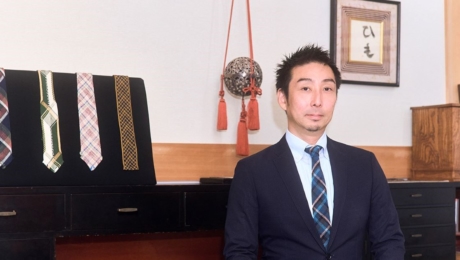

Inheriting the Ancient Essence of Kumihimo
Weaving, knitting, and braiding—these are the three major methods of textile production, used to intertwine bundled threads and produce kumihimo cords. Since arriving in Japan from the Asian continent around the year 600, kumihimo has evolved along a unique course, finding various uses such as in court garments, to secure sword scabbards, and as ties for the obi sashes of kimono. The developmet of the sophisticated culture of the Edo period and its culture of iki (stylishness) led to the emergence of a wealth of new patterns and techniques. Domyo was founded in Ueno in 1652 as a textile merchant that handled kumihimo. With kumihimo artisans in their employ, Domyo worked with members of the samurai class to research and develop its history and techniques. With modernization, most production transitioned to machine manufacturing from the late 19th century onwards, yet Domyo has continued to doggedly protect the handwork and techniques of artisans to this day.
It all begins with the initial process of dyeing the threads. Artisans dye each silk thread color by color, producing a spectrum of subtly different hues and saturations with which to create innumerable kumihimo patterns. Moreover, the dyed threads can be mounted on a braiding stand and hand-braided, which lends the kumihimo an elasticity and texture unattainable through machine production; that is, the experience, nuances in application of strength, and delicacy in handwork of the skilled artisans is vital.
Drawing on the traditional techniques they inherited, Domyo established the Western-style brand DOMYO in 2015 to develop new products in line with modern times. With the desire to pass on the art of kumihimo to younger generations and overseas, the brand offers simple, everyday items like ties, accessories, and belts. At the boutique in Kagurazaka directly operated by DOMYO, workshops are held where participants can experience making kumihimo accessories such as bracelets and neck straps. From one-day experiences to structured classes, these authentic courses use the actual tools and silk threads employed in kumihimo making, sharing the opportunity to experience the allure of kumihimo firsthand with all.






